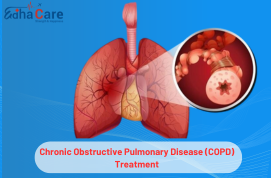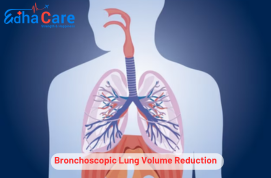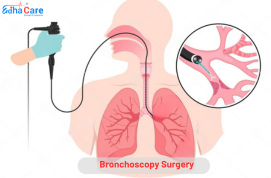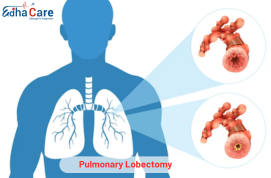Chronic Obstructive Pulmonary Disease (COPD) Treatment

The primary objectives of treating chronic obstructive pulmonary disease, also known as COPD are to manage symptoms, promote quality of life, and impede the illness's progress. Usually, a mix of rehabilitation for the lungs, changes in lifestyle, and medications is used. Corticosteroids and bronchodilators are frequently administered to treat respiratory problems and lower irritation of the airways. In severe cases, oxygen treatment may be suggested to raise blood oxygen levels. Giving up smoking is crucial to stopping the spread of the disease, and getting vaccinated against pneumonia and influenza can stop flare-ups. To improve lung function and standard of life in cases that require more extensive surgical procedures such lung volume decrease surgery or pulmonary transplantation may be taken into consideration.
Book an AppointmentAbout Chronic Obstructive Pulmonary Disease Treatment
Symptoms: Lung tenseness, sneezing, shortness of breath, and a high production of mucus are some of the signs and symptoms of COPD. The signs and symptoms usually get stronger over time and become more apparent when you exercise or are around irritating things like cigarette smoking or pollution in the air.
Causes: Prolonged exposure to irritating gasses or particulate matter—most commonly from cigarette smoke—is the primary cause of COPD. The development of COPD can also be attributed to other causes, including genetic susceptibility, occupational exposure to chemicals and dust, and exposure to both indoors as well as outdoors.
Remedies: Treatments for COPD include relief from symptoms, avoiding exacerbations, and delaying the course of the disease. In order to improve lung function and standard of life, options for treatment may include bronchodilator drugs to relax the airway's the muscles, steroids to reduce inflammation, oxygen treatment to raise the level of oxygen in the blood, pulmonary rehabilitation therapies to enhance the condition of the lungs, and smoking cessation to slow the progression of the disorder and enhance overall wellness. In addition, managing symptoms of COPD and improving results can be achieved by avoiding triggers like smoking and air pollution and by living a healthy lifestyle that includes frequent exercise and a nutritious diet.
Procedure of Chronic Obstructive Pulmonary Disease Treatment
Diagnosis and Assessment: The first step in COPD treatment is accurate diagnosis, which typically involves a thorough medical history, physical examination, lung function tests (spirometry), and sometimes imaging studies like chest X-rays or CT scans.
Medication Management: Based on the severity of COPD symptoms and exacerbations, healthcare providers may prescribe various medications. These include bronchodilators (inhaled beta-agonists and anticholinergics) to relax airway muscles and corticosteroids to reduce inflammation in the lungs. The specific medications and their dosages are tailored to individual needs.
Pulmonary Rehabilitation: Pulmonary rehabilitation programs are essential components of COPD management. These programs typically include exercise training, education on COPD management and self-care, nutritional counseling, and psychological support. Pulmonary rehabilitation aims to improve exercise tolerance, reduce symptoms, and enhance quality of life for individuals with COPD.
Oxygen Therapy: In cases of severe COPD with low blood oxygen levels (hypoxemia), supplemental oxygen therapy may be prescribed. This involves the use of oxygen delivered through nasal prongs or a mask to improve oxygenation and reduce symptoms such as shortness of breath and fatigue.
Smoking Cessation: Smoking cessation is fundamental in COPD management. Healthcare providers offer counseling and support to help individuals quit smoking, as continued smoking can worsen COPD symptoms and accelerate disease progression.
Vaccinations: Vaccinations against influenza and pneumococcal pneumonia are recommended for individuals with COPD to reduce the risk of respiratory infections and exacerbations.
Regular Follow-up and Monitoring: Individuals with COPD require regular follow-up appointments with their healthcare providers to monitor disease progression, assess treatment efficacy, adjust medications as needed, and provide ongoing support and education.
Require Assistance?
Get A Quick Callback From Our Healthcare Experts
Other Specilities We Cover

Bronchoscopic Lung Volume Reduction

Bronchoscopy Surgery




